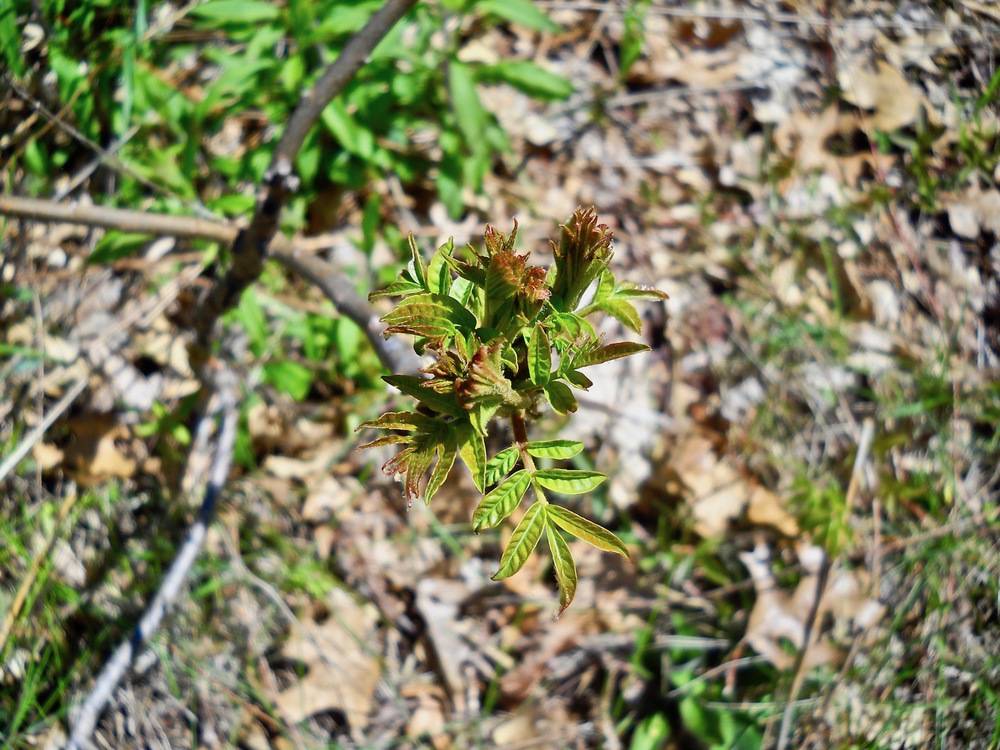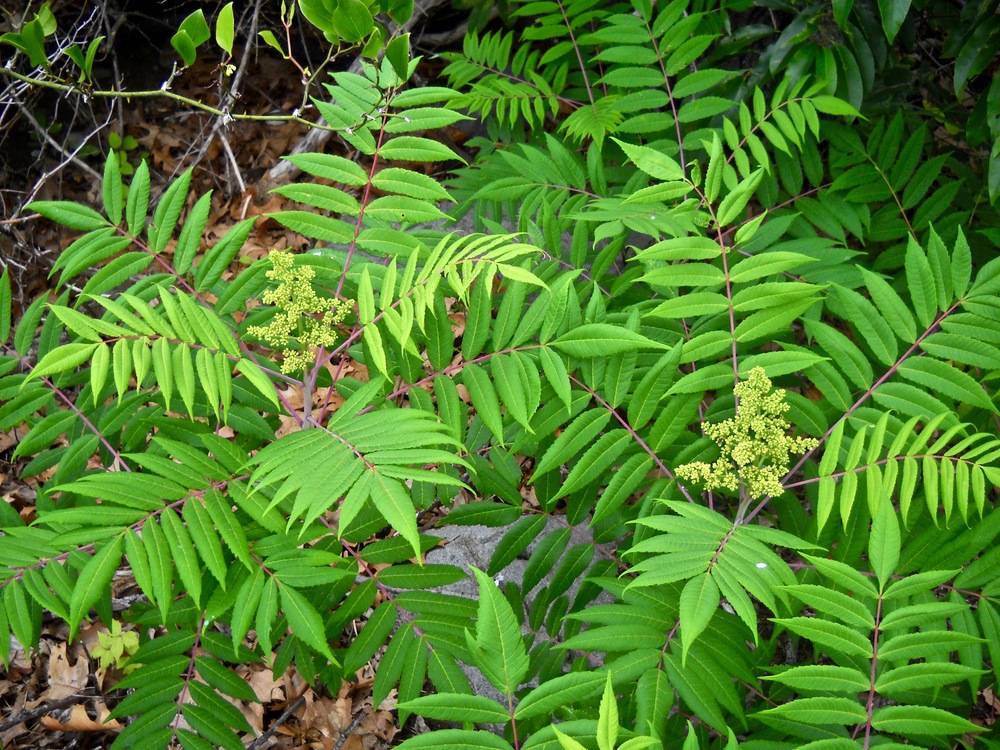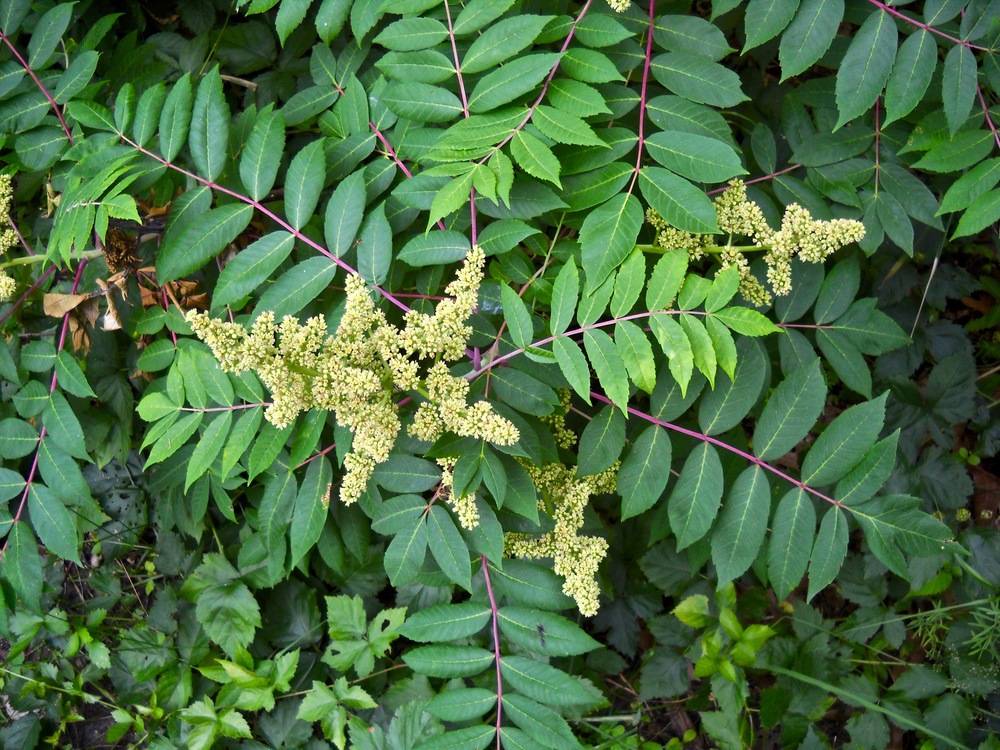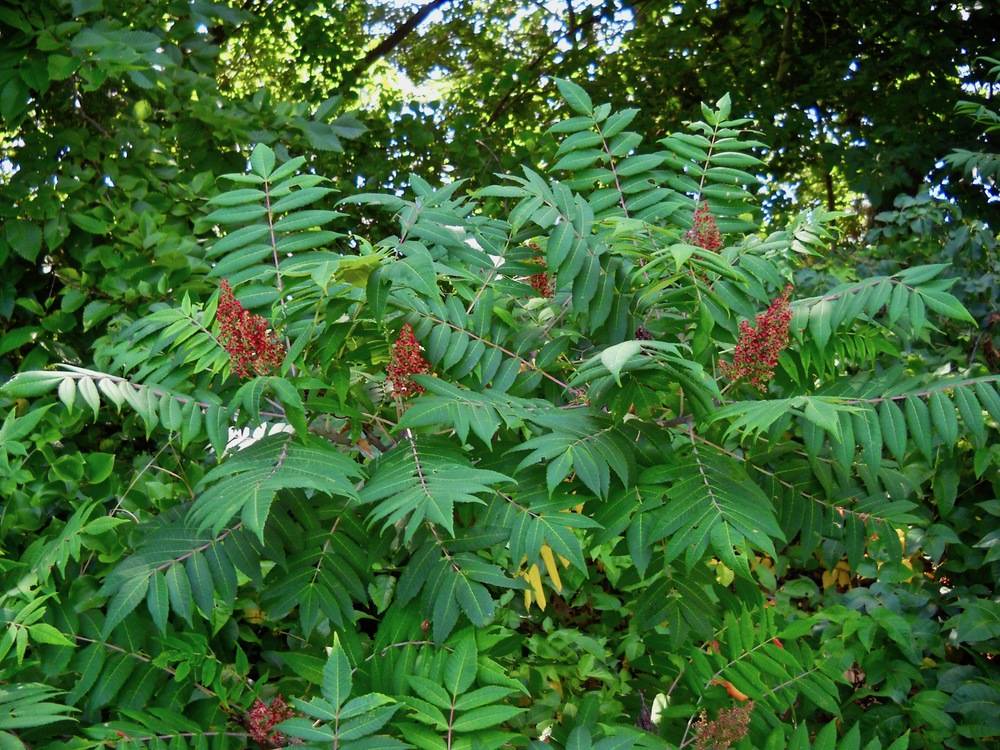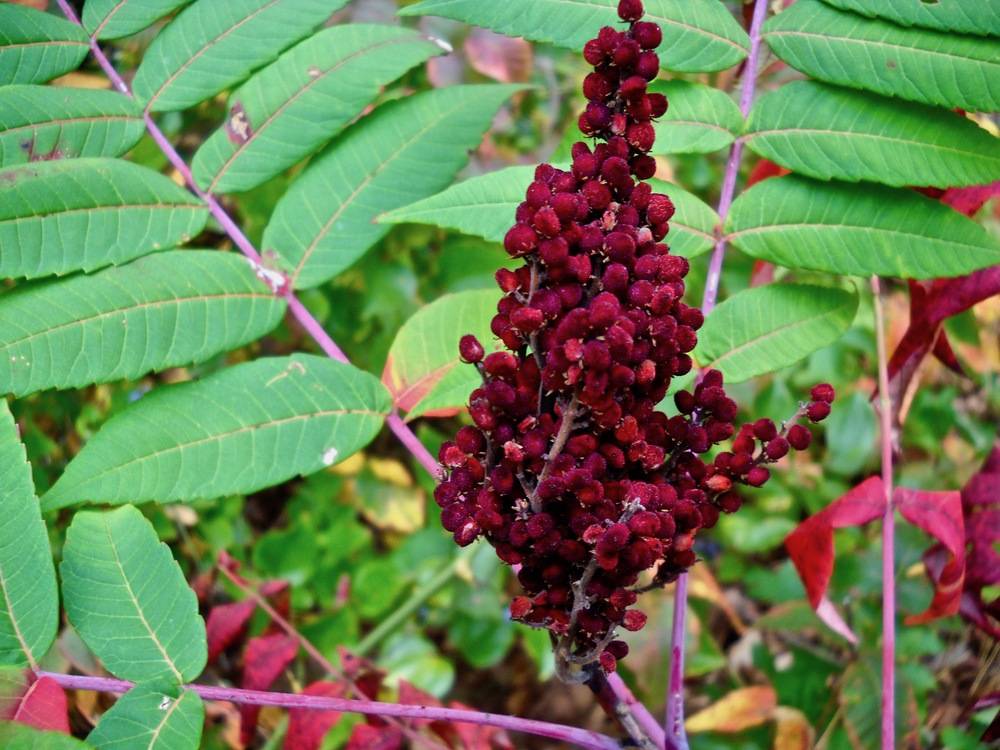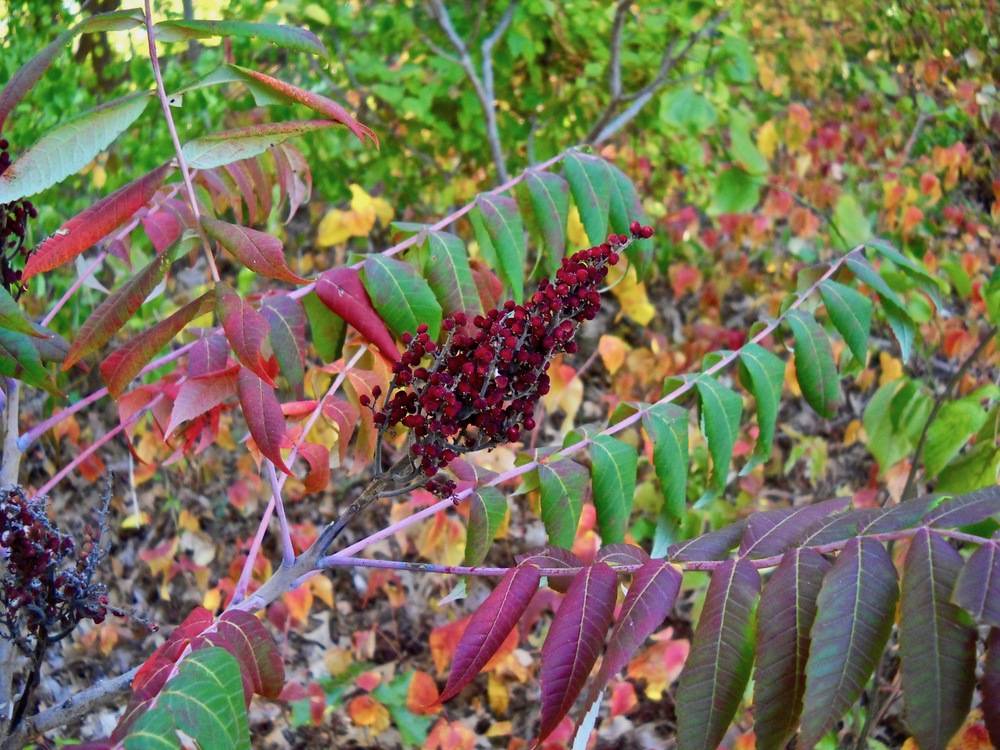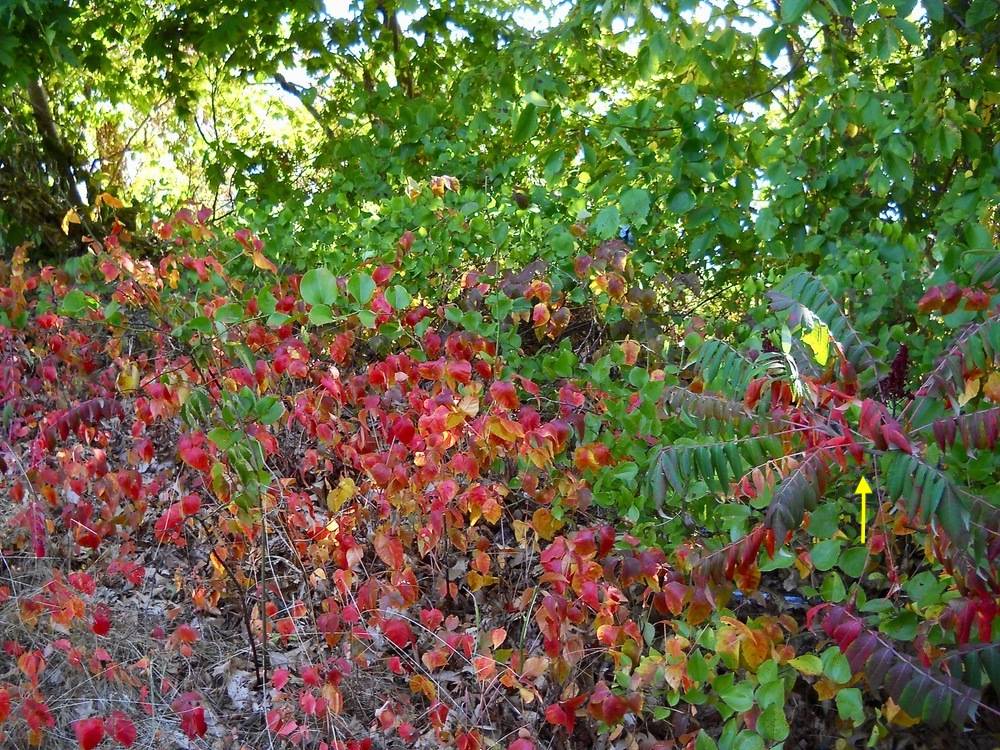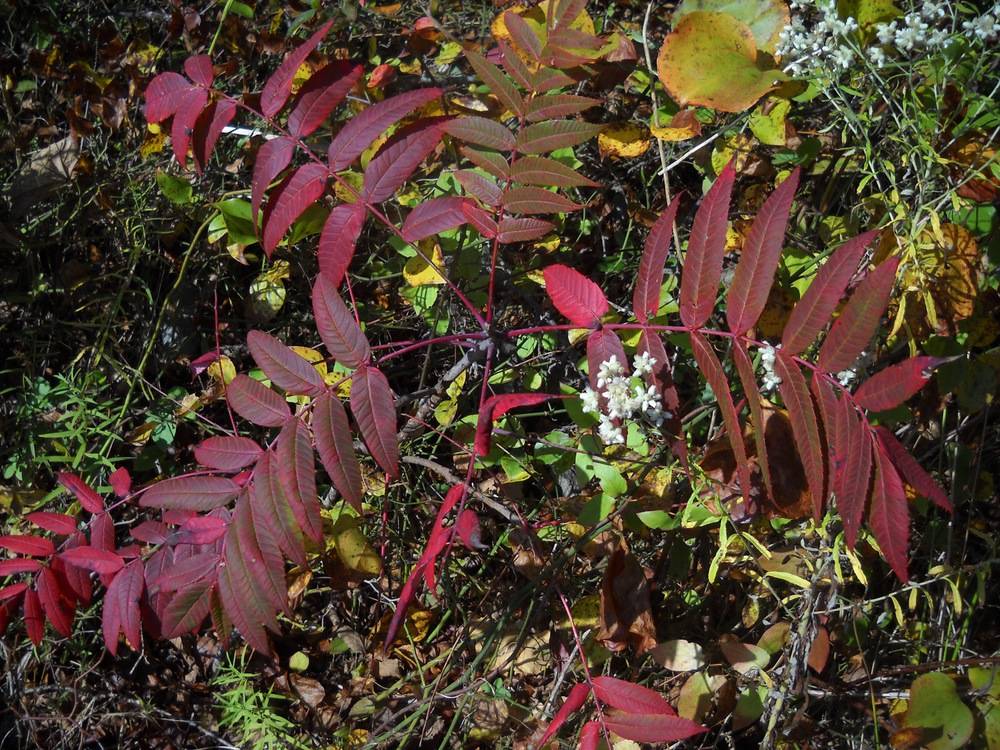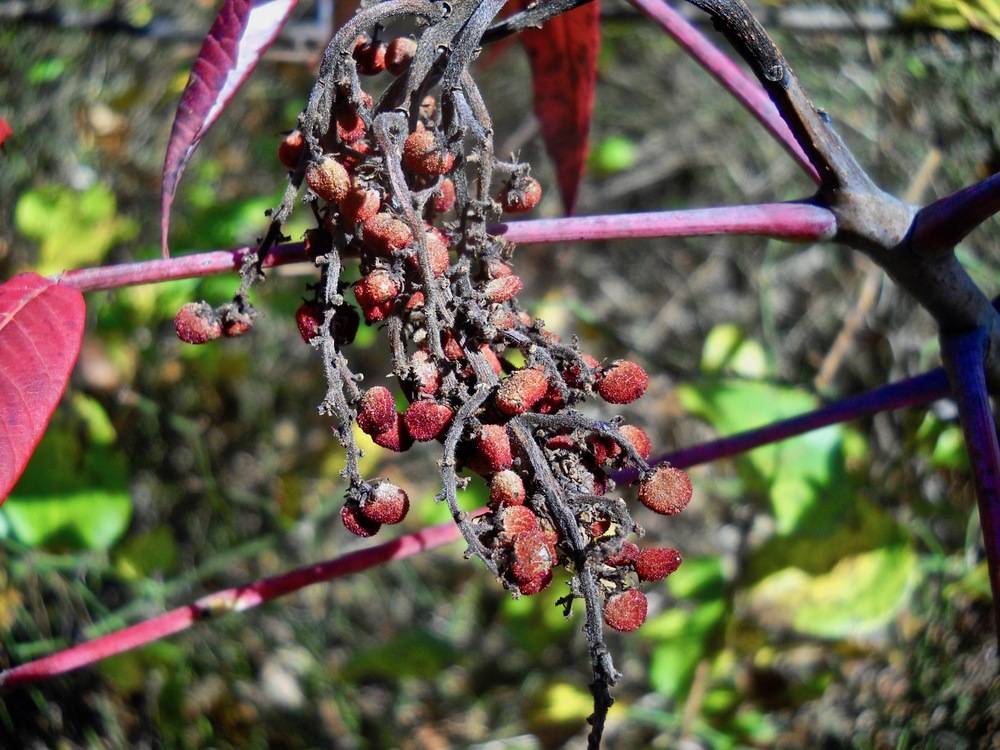smooth sumac
Smooth sumac is a shrub native to North America. Based on its floral structure, it is in the same plant family as poison ivy and the cashew tree. It is an attractive pioneer species that thrives in sunny, even if disturbed settings bordering prairie or woodland, railroad or road embankments, and fence rows. The individual stems are short lived but are quickly replaced by new shoots from a well developed root system.
At Salter Grove, stems of smooth sumac with their crowns of long pinnately compound leaves grow along the sunnier and dryer portions of the Upland, and Marsh Trails. Large showy panicles of small yellowish flowers appear in mid-summer and add to the impression of a tropical plant. It is even easier to spot them in autumn when both leaves and velvety fruits turn a brilliant red.
Smooth sumac was important to Native Americans both as a food plant as well as a source of medicines and dyes. One ethnobotanical study listed 108 traditional uses. Young shoots and bark were eaten and the red leaves were dried and smoked. The flowers were used to relieve teething pain in babies, and sore mouths in general. The sour fruits were eaten or made into a drink. Decoctions made from roots were used to treat gastrointestinal problems. Different parts of the plant variously produced yellow, orange or black dyes. Tribes in the northwest relied on the timing of color change in its leaves as an indication that sockeye salmon, an important food source, was spawning.
For more information:
https://gobotany.nativeplanttrust.org/species/rhus/glabra/
http://dendro.cnre.vt.edu/dendrology/syllabus/factsheet.cfm?ID=80
https://www.illinoiswildflowers.info/trees/plants/sm_sumac.htm
https://en.wikipedia.org/wiki/Rhus_glabra
http://naeb.brit.org/uses/search/?string=rhus+glabra
http://www.florafinder.com/Species/Rhus_glabra.php

